Leiden Summer School in Languages and Linguistics 2024 |
Jeroen Wiedenhof |
Sinographics
Chinese writing & writing Chinese
Leiden Summer School in Languages and Linguistics 2024 |
Jeroen Wiedenhof |
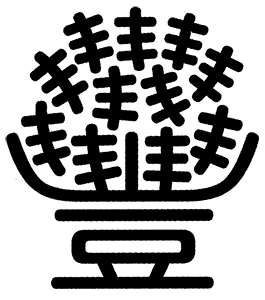
Image source: Tien-Min, Liao / 廖恬敏 “From East to West: Mastering the craft |
Contents, objectives, materials, modes of instruction & requirements:
see the Course Fact Sheet
All other details are on the Leiden Summer School in Languages and Linguistics website

First week, 15-19 July 2024
session 1 • Intro: Setting the Scene
session 2 • Language and script: The structure of Chinese characters
session 3 • Corresponding with Heaven: The early scribes
session 4 • Doing right by a script: The tools of lexicography
session 5 • Excursion to Leiden University's Special Collections and Asian Library
Second week, 22-26 July 2024
session 6 • Catching up and looking ahead
session 7 • Brushes with power: Script and society
session 8 • Myths about language and script
session 9 • Documenting Chinese
session 10 • From bones to bytes: The digital revolution
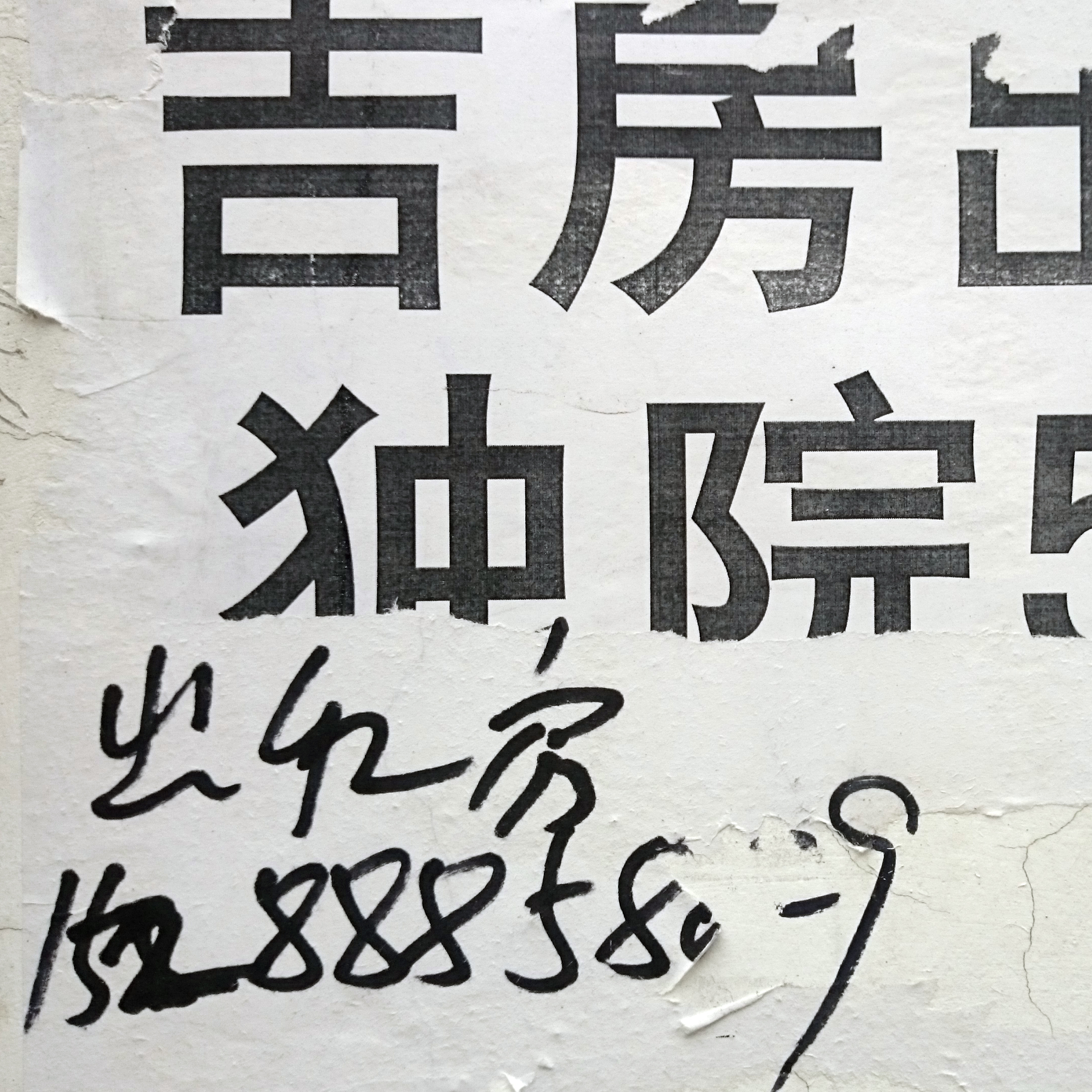 Intro: Setting the scene
Intro: Setting the sceneWriting is – in most definitions – connected with language. But if language travels through sound waves and writing is a visual medium, then how do these two domains interact?
Writing systems displays intricate and diverse ways of mapping the sounds and meanings of language to a visual format.
Once written down, some elements from speech are preserved and some are lost. And vice versa: the visual signal may transmit components from the spoken original, but also features which are absent in spoken form.
In this first session, we will explore how language comes to us through the Chinese script – and how fast such modes can change.
...and contact me for any questions
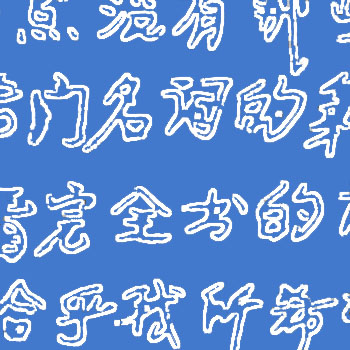 Text
Text
趙元任 Yuen Ren Chao, 序 "Xù" [Preface]
In: 趙元任 Yuen Ren Chao, 中國話的文法 Zhōngguóhuà de wénfǎ [A grammar of spoken Chinese].
香港 Hong Kong: 中文大學出版社 Chinese University Press, 1980, frontispiece.
Translation of Yuen Ren Chao, A grammar of spoken Chinese.
Berkeley: University of California Press, 1968. Translated by 丁邦新 Pang-Hsin Ting.
Chao's 序 will be handed out and introduced in class. For this text, no preparation is needed.
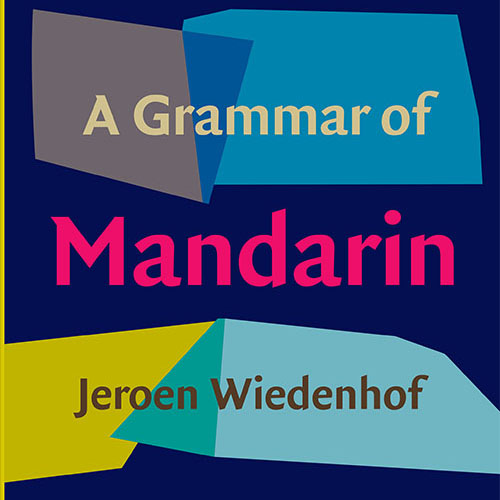
"The Chinese script"
= Chapter 12 of Jeroen Wiedenhof, A grammar of Mandarin,
Amsterdam: John Benjamins, 2015
Availability at Leiden:
- from the Asian Library, on the linguistics handbooks shelves;
- as an e-book, through the University Library catalogue
1. As indicated in the course description, please prepare for the coming two weeks by reading "The Chinese script" = Chapter 12 of Jeroen Wiedenhof, A grammar of Mandarin, Amsterdam: John Benjamins, 2015.
 Fig02.jpg) Language and script:
Language and script: The Chinese script has been studied for millennia, both in and outside China, giving rise to a bewildering set of principles, approaches and perspectives.
Today, we are covering some groundwork in terms of data, units of analysis, methods and terminology.
"Introduction" = Volume 1, pp. v-xxxi.
In: Ching-yi Dougherty, Sydney M. Lamb & Samuel Martin, Chinese character indexes. Berkeley: University of California Press, 1963
Jeroen Wiedenhof, "An introduction to linguistic transcription"
LIAS/LUCL, Universiteit Leiden, 2018
Please make sure to prepare all your answers in writing, in English!
We did not have time to cover the rationale for this requirement yesterday; it will be addressed in today's session.
By way of a heads-up: next Wednesday (in session 3), we will be reading a text in Chinese.
For now, if you cannot read modern written Chinese — or if you expect you might benefit from a native command of Mandarin:
- Prepare to buddy up!
- Make sure to contact classmates now, and to set a date & time to prepare Wednesday's text together.
- As agreed within this group, I have shared a list of email addresses.
Image source:
Cliparts PUBAs discussed, this buddy-up request is more general. In preparing future sessions, please try to share and join forces in the spirit of this multidisciplinary seminar.
3. Read the Introduction to linguistic transcription. Note down any questions or remarks and bring them to class.
4. Read the text, note down any difficulties you may have in reading the text, and bring your notes to class.
We will be start with your individual questions and comments, going through the assigned text page by page.
5. In the Preface, check which personal names ring familiar.
6. On p. ix/L,
a. What is meant by "the standard pronunciation(s)"?
b. What is the difference between transcription, "transliterations systems" and "romanization"?
7. On p. x/R, in Figure 2, check and see if you are missing any details.
8. On p. xi/L, character #5536
is shown twice in Figure 3.
Now compare character #1788.1 复 in Figure 2.
What is the reason that this character is not shown twice?
9. Make sure you are familiar with the calligraphic terminology on pp. xi/R-xii/L.
In one sentence, describe the relevance of these terms are in this context.
10. Check the Rules on pp. xix-xxi and the Concordance on pp. xxii-xxix. And/or look up any online resource on the Gwoyeu Romatzyh transcription.
On the basis of this information, see if you can read (i.e. pronounce & translate) the Chinese book titles listed on p. xxx.
Be prepared to cite these titles by reading them out aloud in class.
11. On the basis of your reading of this Introduction, can you formulate a technical definition for the term Chinese character as implied here?
Mechanization & Chinese script
A Chinese telegram (detail)
– Click for full image
Source: Sohu / 搜狐
–
電報 ~ 电报 diànbào 'telegram'
– 電傳 ~ 电传 diànchuán 'telex'
– 中文電報碼 ~ 中文电报码 Zhōngwén diànbàomǎ 'Chinese telegraph code'
– Mechanization of Chinese characters, backgrounds & overview:
Thomas S. Mullaney, The Chinese typewriter: A history, Cambridge, Massachusetts: MIT Press, 2017 (available at Leiden University Library)
Digitization & Chinese script
–
Binary counter (百聞不如一見)
– the Baudot-Murray code
– the ASCII code
– the 国标 Guóbiāo code
–
Five-hole paper tape: writing and reading digital data
– Digitization of Chinese characters, backgrounds & overview:
Jeroen Wiedenhof, "The digital revolution" = § 12.5.2 of A grammar of Mandarin (online at Leiden University Library)
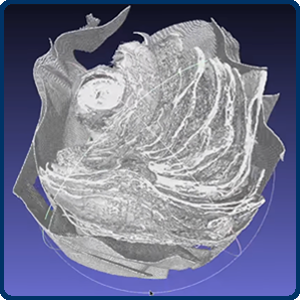 ...and an encore
...and an encoreIn the news: The Vesuvius challenge
Image source:
Campfire scroll
Tomorrow, we will turn our attention to the earliest known ancestor of the Chinese script.
Note the careful wording here: "earliest known" implies that we may yet discover evidence of even earlier forms. And yes: we will be discussing the likelihood of such discoveries for the Chinese case.
Speaking of discoveries, one exciting instance of written materials recovered from a distant past was publicized earlier this year:
Margherita Bassi: "Three students just deciphered the first passages of a 2,000-year-old scroll burned in Vesuvius' eruption". Smithsonian Magazine, 6 Feb 24.
The project's webpage is here: Vesuvius Challenge.
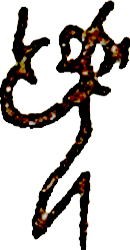 Corresponding with Heaven: The early scribes
Corresponding with Heaven: The early scribesAt the dawn of history, humans were fully modern in the anatomical and in the neurological sense. Their brains, and their languages, were as complex and as diverse as they are today. There were just fewer speakers.
Even at this early stage, the world must have been teeming with linguists. We know nothing about their theories, but their legacy remains with us today, for they created the first writing systems.
The art of writing was invented more than once, and the puzzle how to represent sound and meaning in graphs has been solved in very different ways. The Chinese case offers us a rare insight in the tenacity of some cultural artefacts.
Today, we will:
study the material culture which produced a script whose characteristics have survived into the digital age;
consider the challenges of interdisciplinary studies; and
learn how to introduce a text dating back more than three millennia to a modern audience.
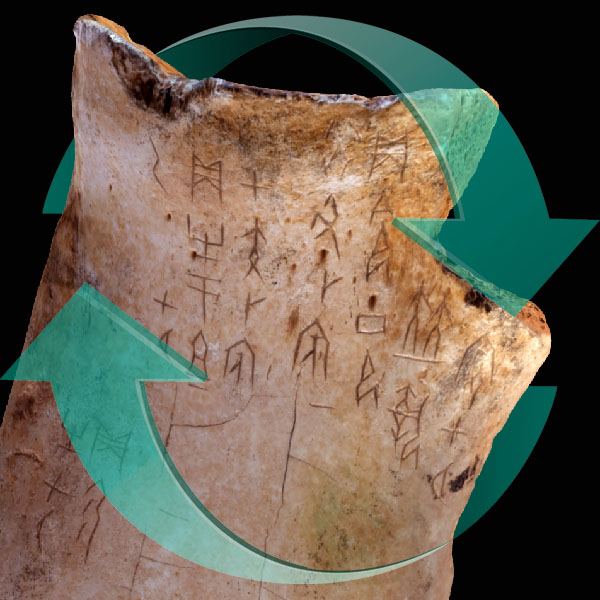 |
|
Oracle Bone CUL.52
Interactive scans by Sketchfab, 2015
"Preamble"
In: David N. Keightley, Sources of Shang history: The oracle-bone inscriptions of bronze age China.
First edition 1978; paperback edition, with corrections, Berkeley: University of California Press, 1985, pp. 1-2 (Preamble)
Leiden Asian Library: S-UB DS744.K44 1985.
"月㞢食"
In: 李圃 Lí Pǔ, selection and commentary, 甲骨文選注 Jiágǔwén xuǎn zhù [Oracle bone writing: An annotated anthology].
上海 Shanghai: 古籍出版社 Gǔjí Chūbǎnshè, 1989, section 1, pp. 1-8.
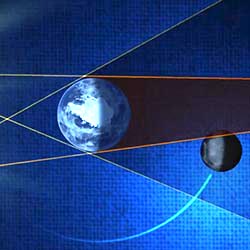 Background
Background
NASA (2011)
"Lunar eclipse essentials"
NASA Goddard Space Flight Center
Uploaded to Youtube on 8 June 2011.
Djamouri (1992)
Redouane Djamouri, "Un emploi particulier de you (有) en chinois archaïque"
Cahiers de Linguistique Asie Orientale, January 1992, Volume 21(2), pp. 231-289.
A PDF of this article is also available online at Persée.
Keightley (1985)
Chapter 1, "Shang divination procedures"
Chapter 2, "The divination inscriptions"
David N. Keightley, Sources of Shang history: The oracle-bone inscriptions of bronze age China.
First edition 1978; paperback edition, with corrections, Berkeley: University of California Press, 1985, pp. 3-27 (Chapter 1), 28-56 (Chapter 2).
Available in the Leiden Asian Library: S-UB DS744.K44 1985.
Takashima (2019)
Ken-ichi Takashima, A little primer of Chinese oracle-bone inscriptions: With some exercises.
Wiesbaden: Harrassowitz, second revised edition, 2019. First published 2015.
Thurston (1994)
Hugh Thurston, "The Chinese"
In: Hugh Thurston, Early astronomy. New York: Springer, 1994, pp. 84-109.
Leiden University Library code: GORLAE ASTRON QB016 203.
12. In case you need help with the Wade-Giles spelling:
– For systematic guidelines & conversion, see Appendix D in A grammar of Mandarin (online at Leiden University Library); or
– For ad-hoc conversion, see e.g. the Chinese Text Project's transcription-conversion tool.
– And while you are at it, check out the same tool for the Gwoyeu Romatzyh spelling (cf. assignment #10 above)
13. Sexagesimal means 'based on 60' just as decimal means 'based on ten'. The sexagesimal system is the basis of (not just) the Chinese calendar.
Graphs representing this cycle are well-known from even the oldest specimens of oracle bones.
In case you need help with the sexagesimal cycle:
- A short explanation of the system is given in Tables 9.3 & 9.4 in A grammar of Mandarin;
- For ad-hoc conversion, see e.g. Wikipedia's Stem, Branch and Stem-Branch tables.
14. "Wu Ting's reign" (Keightley 1985: 1):
Wikipedia has a list of Shang Kings.
On Keightley's (1985) "Preamble":
15. With the help of the Reading notes, read the "Preamble" to David Keightley's Sources.
In preparing this text, please check that you are familiar with
- the TIME: names and dates for dynasties, historical periods and historical figures
– e.g. "Wu Ting";
- the PLACE: please check all geographical designations
– e.g. "the powerful Ho".
- technical terms in English and in Mandarin, including the corresponding Chinese characters,
– e.g. "hsin-wei, eighth day";Note down any difficulties you may have in reading the text, and bring your notes to class.
16. In the interactive scan above, please identify the "series of hollows" (Keightley 1985: 18) and "the characteristic pu 卜-shaped crack" (ibid.).
17. Consider the character卜:
a. Which pronunciation(s) and which meaning(s) can you find for modern Chinese languages?
b. Can you find a phonological reconstruction for the pronunciation of this character? (the earlier, the better)
18. On p. 50, it is explained that "[a]s a rule, the inscriptions appear to have been carved above, or to the side of, the pu cracks and on the side of the crack which lacked the transverse branch".
Can you confirm this general rule for our "月㞢食" text?
On Lǐ's (1989) "月㞢食":
19. On the basis of 李圃 Lí Pǔ's helpful notes, read and prepare an English translation of the original oracle-bone text.
In other words: please translate the short (nineteen-character) text shown on p. 1.
In preparing this translation, please take notes about any difficulties encountered in reading Lǐ's commentary.
We will discuss Lǐ's text in class, page by page if necessary.
20. Oracular text, line 4, character 2:
In your own words, define the relationship between the character 㞢 and the character 有.
You should minimally formulate what you know on the basis of Pǔ's comments, combined with your own experience.
In this connection, also compare the comments on character adaptations from our first session.
For more background, you may consult Djamouri (1992).
21. Do you know if there are any oracle bones to be seen at Leiden? (or if not: in Leiden? ;-)
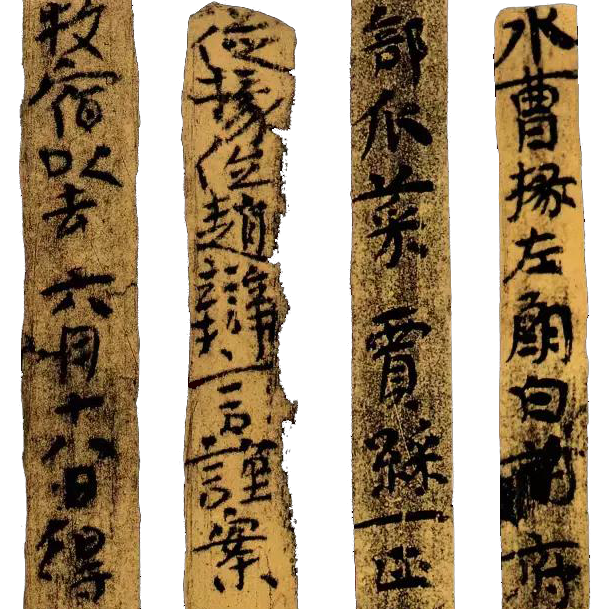 Doing right by a script: The tools of lexicography
Doing right by a script: The tools of lexicographyImage source: 每日頭條 / KKNews
In Session 3, we saw how the invention of writing was embedded in technological and economic change.
Today, we will explore early advances in Chinese lexicography against the backdrop of philosophical and political developments In Qín 秦 and Hàn 漢 times.
This session will consist of two parts:
- Today's centerpiece:
An unconventional look at the establishment of writing conventions
- Looking ahead:
Exploring possibilities for your term paper
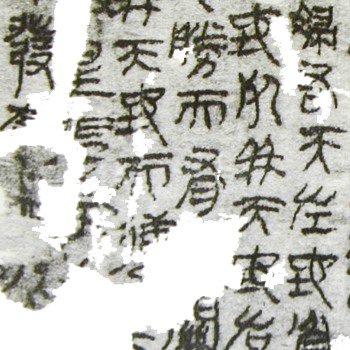 Galambos (2006)
Galambos (2006)Chapter Two, "The Qin and Han creation of the standard"
In: Imre Galambos, Orthography of early Chinese writing: Evidence from newly excavated manuscripts, pp. 31-63.
Budapest: Eötvös Loránd University, Department of East Asian Studies, 2006.
A PDF of this book is available online.
From Wikipedia: The free encyclopedia
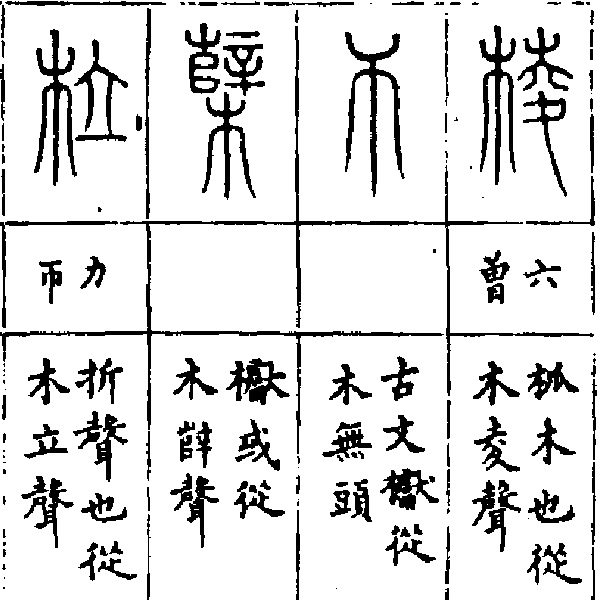 |
Image source: Archive.org |
許慎 Xǔ Shèn, 說文解字 Shuō wén jiě zì
说文解字: 附检字 Shuō wén jiě zì: Fù jiǎn zì [Discussion of simple characters and analysis of complex characters: With a character index], 北京 Peking: 中華書局 Zhōnghuá Shūjú, 1963. East Asian Library number: SINOL. 5093
- Online edition: 《說文解字》 at the website of 北京师范大学 / Beijing Normal University
- Paper edition: East Asian Library number: SINOL. 5093. Available in the Leiden Asian Library: see the dedicated Course Shelf for this course.
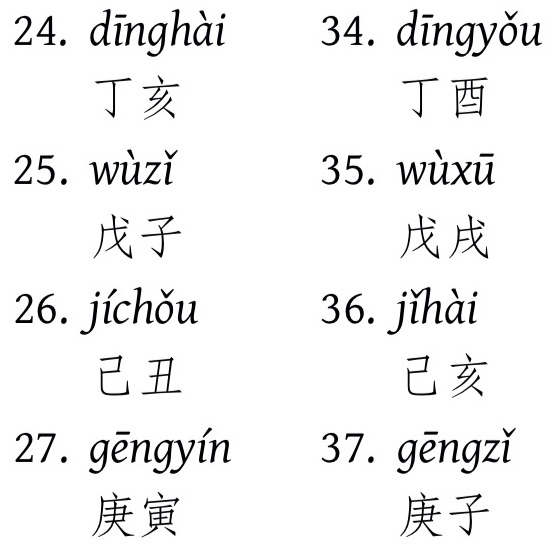 Two challenges from last session:
Two challenges from last session:22. See if you can memorize the ten Stems (S) and the twelve Branches (B).
23. For the mathematically minded (Alex?):
Can you create a formula converting any legitimate set (S, B) into the corresponding numeral, from 1 to 60?
— by "legitimate set", I mean any of the sixty traditional two-member sets, matching either an impair S with an impair B, or a pair S with a pair B.
24. Read the first two texts:
- Galambos' Chapter Two, "The Qin and Han creation of the standard" and
- the Wikipedia article "Shuowen Jiezi".
Note down any difficulties you may encounter in these two texts, and bring your notes to class.
As explained in class, we will start by discussing your questions and remarks on a page-by-page basis .
25. The third title is a modern reprint of the 說文解字 Shuō wén jiě zì.
(a) Have a good look at this book, either online or on the course reserve shelves in the Leiden Asian Library.
(b) Check that you understand how the work is organised.
(c) Find the characters
,
,
and
in this dictionary.
If you use the online resource for this assignment: please
make sure to view the scanned pages by hitting thebutton.
For each of these four characters, write down
- the page number for the entry in this modern edition
- the Shuō wén jiě zì radical
- the dictionary's definition of the characters, and
- your own English translation of this definition
Today's presentation will feature rare manuscripts and printed originals in the area of Chinese scripts and languages.
We will be guests at Leiden's Asian Library at the invitation of Librarian and Curator Marc Gilbert.
Please note that today's class will be held at the University Library.
![]() We meet at 2:00pm sharp, in the hallway of the University Library's main entrance.
We meet at 2:00pm sharp, in the hallway of the University Library's main entrance.
From there, we will walk to today's venue together.
Today, we will take out some time to reflect on a number of unresolved issues from last week.
26. At the outset of today's session, we will inventorize which assignments from the materials covered in our first week you want to address in this catch-up session.
Please have these ready:
- You may pick items that we had to skip because time was running out;
- or you may choose items already discussed, if you wish to cover more ground.
27. Also, have a look at the names of the sessions planned for the coming week.
There is room for discussion about the topics to be treated: please bring your suggestions to class!
28. Finally, don't forget the double challenge from last week!
Linguistics in general
- Crystal, David, The Cambridge encyclopedia of language. Cambridge: Cambridge University Press, 1987, third edition 2010.
- Matthews, P.H., Concise Oxford Dictionary of Linguistics. New York: Oxford University Press, 1998 and later editions.
- SIL Glossary of linguistic terms
Chinese linguistics
- Dong, Hongyuan, A history of the Chinese language. Abingdon: Routledge, 2014, second edition 2021.
- Norman, Jerry, Chinese. Cambridge: Cambridge University Press, 1988.
- Wiedenhof, Jeroen, A grammar of Mandarin. Amsterdam: John Benjamins, 2015.
Writing & scripts in general
- Daniels, Peter T., and William Bright, The world’s writing systems. Oxford: Oxford University Press, 1996.
- Omniglot / Alphabets & writing systems. Omniglot, the online encyclopedia of writing systems and languages, 2022.
Chinese writing & writing Chinese
- Behr, Wolfgang, “In the interstices of representation: Ludic writing and the locus of polysemy in the Chinese sign”, in: The idea of writing: Play and complexity. Leiden & Boston: Brill, 2010, pp. 281-314.
- Boltz, William G., The origin and early development of the Chinese writing system. New Haven: American Oriental Society, 1994.
- Erbaugh, Mary S., Difficult characters: Interdisciplinary studies of Chinese and Japanese writing. Pathways to Advanced Skills Series, Volume VI. Columbus: National East Asian Language Resource Center, Ohio State University, 2002.
- Galambos, Imre, Orthography of early Chinese writing: Evidence from newly excavated manuscripts. Budapest, Department Of East Asian Studies, Eötvös Loránd University, 2006.
- Handel, Zev, “Can a logographic script be simplified? Lessons from the 20th century Chinese writing reform informed by recent psycholinguistic research”. Scripta, Volume 5, 2013, pp. 21-66.
- Handel, Zev, Sinography: The borrowing and adaptation of the Chinese script. Leiden: Brill, 2019.
- Kraus, Richard Kurt, Brushes with power. Berkeley: University of California Press, 1991.
- Lunde, Ken, CJKV information processing. Sebastopol: O’Reilly, 1999.
- McCawley, James D., The eater’s guide to Chinese characters. Chicago: University of Chicago Press, 1984.
- Qiu, Xigui / 裘锡圭 [Qiú Xīguī], Chinese writing / 文字學概要, translated by Gilbert L. Mattos en Jerry Norman on the basis of two Chinese text editions: 北京 Peking: 商务印书馆 Shāngwù Yìnshūguǎn 1988 and 台北 Taipei: 萬卷樓 Wànjuànlóu 1994. Berkeley: The Society for Study of Ancient China and The Institute of East Asian Studies, University of California, 2000.
- Unger, J. Marshall, Chinese characters and the myth of disembodied meaning. Honolulu: University of Hawai‘i Press, 2004.
- Zhou, Youguang / 周有光 [Zhōu Yǒuguāng], The historical evolution of Chinese languages and scripts / 中国语文的时代演进, bilingual edition, English translation by Zhang Liqing / 张立青 [Zhāng Lìqīng]. Ohio State University: National East Asian Languages Resource Center, 2003.

Databases
- 汉典
- 國際電腦漢字及異體字知識庫 / International Encoded Han Character and Variants Database.
- 汉字全息资源应用系统
Chinese Etymology / 字源
- 小學堂文字學資料庫
- 宋代墓志铭数据库 / China Stone Inscription Database – login @Leiden University Libraries
- zi.tools / 字統网 /
Journals
Journal of Chinese Writing Systems – login @Leiden University Libraries
- SCRIPTA: An International Journal of Codicology and Palaeography
Traditional texts online
- Scripta Sinica / 漢籍全文資料庫 – login @Leiden University Libraries
- 《說文解字》 @ Chinese Text Project (a.k.a. ctext.org)
- 《康熙字典》 網上版